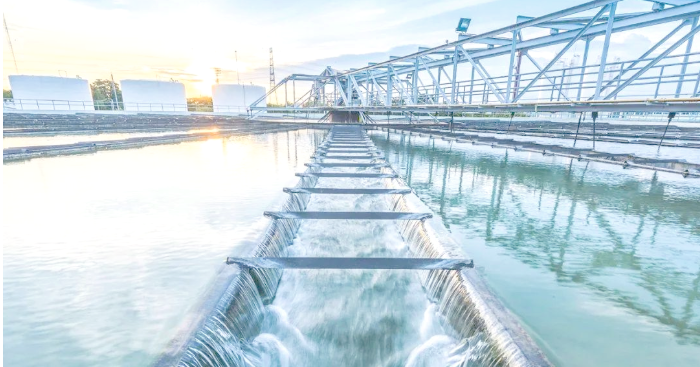Ozone wastewater treatment technology and its application in deodorization, decolorization and COD reduction
Since its introduction in 1905, ozone (O3) wastewater treatment technology has become a highly sought-after water treatment method with the continuous advancement of technology and the gradual reduction of costs. Leveraging its significant technical and economic advantages, this technology has been widely adopted worldwide, achieving numerous remarkable research results and engineering applications. Next, we will delve into how ozone plays a key role in deodorization, decolorization, and chemical oxygen demand (COD) reduction in wastewater treatment.
Ozone Application in Excess Sludge Reduction
As an important wastewater treatment method, the activated sludge process has played a significant role in increasing daily wastewater treatment capacity and has become a widely used wastewater treatment technology both domestically and internationally. However, with its widespread adoption, the problem of excess sludge generated during wastewater treatment has become increasingly prominent, and sludge treatment costs have become a growing component of overall wastewater treatment costs. To address this challenge, ozone technology has been widely used in the pre-treatment and reduction of excess sludge, achieving relatively mature technical results.
Application of Ozone in Wastewater Treatment
The activated sludge process plays a vital role in wastewater treatment. Its remarkable treatment capacity has made it a widely used wastewater treatment technology worldwide. However, with its widespread adoption, the problem of excess sludge has gradually emerged, and sludge treatment costs have continued to rise as a proportion of overall wastewater treatment costs. To address this challenge, ozone technology has been widely used in the pretreatment and reduction of excess sludge, achieving significant results.
The ozone-treated sludge enters the aeration tank along with the target wastewater. Through microbial digestion, some of the sludge is converted into carbon dioxide. This ozone pretreatment process significantly reduces the amount of excess sludge. However, it is important to note that ozone treatment requires an ozone generator, which consumes relatively high amounts of energy. Therefore, developing high-efficiency ozone generators and improving ozone utilization are crucial for reducing wastewater treatment costs. In recent years, Sankang Company has made progress in the development of high-efficiency ozone generators. By improving the ozone treatment process, they have transitioned from continuous low-concentration ozone treatment of sludge to intermittent high-concentration treatment. Using actual wastewater as a control, they found that the improved ozone sludge treatment method requires only one-fourth the amount of ozone used as the raw material, while achieving superior treatment results. This breakthrough offers new possibilities for reducing the cost of ozone sludge reduction technology.
Furthermore, odorous substances generated during wastewater treatment are primarily composed of carbon, nitrogen, and sulfur, including inorganic compounds such as ammonia, phosphorus, and hydrogen sulfide, as well as organic compounds such as low-molecular-weight fatty acids, amines, and aldehydes. At my wastewater treatment plant, since 80% of the influent is domestic sewage, the organic content is high and the inorganic content is relatively low. These odorous substances can be oxidized and removed with ozone, further optimizing wastewater treatment efficiency.
Odor-causing substances primarily include organic compounds such as low-molecular-weight fatty acids, amines, aldehydes, ketones, and ethers. These substances contain reactive groups that are prone to chemical reactions, especially oxidation. Ozone's strong oxidizing properties can effectively oxidize these reactive groups, eliminating odors and achieving deodorization.
Ozone also helps prevent the recurrence of odors. Because the gas produced by the ozone generator is rich in oxygen or air, odorous substances tend to stink in an oxygen-deficient environment. Ozone treatment not only removes odors during the oxidation process but also creates an oxygen-rich environment, effectively preventing the recurrence of odors. This is of great significance for improving the treatment environment of municipal sewage treatment plants.
Ozone also has a decolorizing function. With increasing attention to the source environment of tap water and the reuse of secondary treated sewage water, the decolorization of secondary treated water has received widespread attention. For color and odor problems caused by humic substances, ozone treatment can significantly reduce the water color to below 1 degree, meeting or even exceeding general water quality standards.
Typically, coloration in tap water is primarily caused by excessive levels of metals such as iron and manganese. When these metals are present in their free form, conventional treatment methods can effectively remove them. However, when raw water contains humic substances, chromium salts may sometimes form, rendering conventional treatment methods inadequate. Therefore, the introduction of ozone treatment becomes crucial for addressing this issue.
Next, let's explore the decolorization mechanism of ozone. With the rapid development of molecular biology, microecology has extended the ecological perspective to the molecular level.
In fact, both proteins and nucleic acid molecules are organic matter, composed of elements such as carbon, hydrogen, oxygen, nitrogen, and phosphorus or sulfur (C, N, O, N, P, or S). Furthermore, viral capsids are composed of numerous protein subunits, or capsids. These capsids are linked by non-covalent bonds, forming a symmetrical, coiled structure. Proteins are composed of multiple chains, while nucleic acids are composed of interconnected chains of nucleotides.





